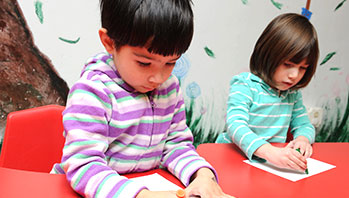- markers, paper, recordings of measurements of children’s plants (paper strips, cut string, stacking cube measurements, etc.)
MA Standards:
Mathematics/Measurement and Data/PK.MD.MA.1: Recognize the attributes of length, area, weight, and capacity of everyday objects using appropriate vocabulary (e.g., long, short, tall heavy, lights, big, small, wide, narrow).
Head Start Outcomes:
Logic and Reasoning/Reasoning and Problem Solving: Classifies, compares, and contrasts objects, events, and experiences.
Science Knowledge/Scientific Skills and Method: Collects, describes, and records information through discussions, drawings, maps, and charts.
Science Knowledge/Scientific Skills and Method: Observes and discusses common properties, differences, and comparisons among objects.
PreK Learning Guidelines:
Mathematics/Measurement 14: Use nonstandard units to measure length, weight, and amount of content in familiar objects.
Draw and Write Together: Make a Graph #1

© Commonwealth of Massachusetts, Department of Early Education and Care (Jennifer Waddell photographer). All rights reserved.
STEM Key Concepts: Measure with nonstandard measurement tools; Measurement is a way of understanding plant growth
ELA Focus Skills: Concepts of Print, Listening and Speaking
Have children continue to add to the graphs that show how their plants grow over time.
Take any paper strips, string measurements, or recordings of stacking cube measurements and gather them for children. Guide and help children to record their measurements continuously so they can watch how their plants grow over time.
As children measure and explore the growth of their plants, ask, How does the graph show how your plants grow? If children have measurements to compare, talk with them about the results.
- For example, mark the top of the paper strips with a marker or pen as you say, The plant was this tall in Week 2, and it is this tall now. Did the plant grow this week?
- Encourage children to use math vocabulary, such as height, and comparative vocabulary, such as taller and shorter, as they share their results.
Adaptation: For groups with younger children, you may want to make this a group-based activity and have children measure a class plant and record measurements on a class chart.
Math Tip: Guide children to understand that graphs show information visually, making it easy to compare things.
